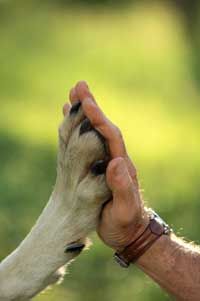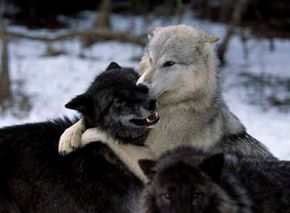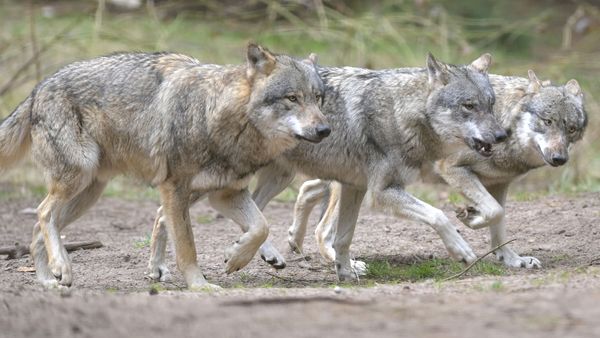For years, Shaun Ellis has lived a "Jungle Book" kind of life in England's Combe Martin Wildlife and Dinosaur Park. Nicknamed the "among wolves," Ellis is a self-taught wolf expert who has spent the majority of his time with a pack of wolves that he helped raise from pup stage since 2004 [source: Brown].
He eats alongside his wolf brethren, tearing organs and meat from the bellies of dead game animals brought into the habitat (his food has been flashed cooked and placed in protective plastic bags). If a wolf displays dominance over him, Ellis can curl his lips into a fearsome, defensive snarl that makes you wonder whether the man doesn't have a bit of lobo running through his blood. Even his howls are pitch-perfect.
Advertisement
Another wolf expert, Tanja Askani from the Czech Republic, lived with a pack of wolves for eight years in Germany's Lüneburger Heide Wildlife Preserve. Beginning with a single orphaned pup, Askani reared and found a mate for the wolf, fostering the creation of the preserve's first pack.
Wolves brought naturalist and photographer Jim Dutcher closer to his wife, animal expert and sound technician Jamie Dutcher. Stars of the Discovery Channel documentary "Living with Wolves," the Dutchers spent six years with a wolf pack in an enclosed wilderness habitat within Idaho's Sawtooth Mountains. While they didn't vie for a position within the pack, the Dutchers gained the wolves' trust. At one point, the alpha female allowed Jamie to enter the wolf den after she gave birth to pups -- behavior never previously attempted by humans since female wolves keep the birthing process private.
One essential element that links these human-wolf experiences is the packs' enclosed settings. While the controlled environments don't completely alter the wolf hierarchies and interactions, it likely tempers their aggression since they don't need to hunt for food or worry about prey scarcity [source: Brown]. Ellis, for instance, has sustained little more than a few cuts and bite marks from living what some consider a savage lifestyle. If he were to encounter the same pack in the wild, its members might not treat him as kindly.
So how safe would people be with wolves in the wild? Learn more about the relationship between wolves and people on the next page.
Advertisement



